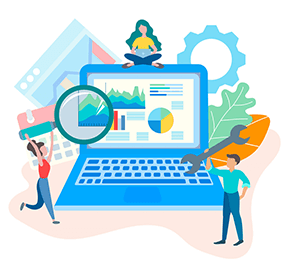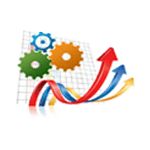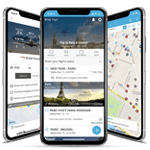Awarded Best Travel Software Company 2019
Africa
Caribbean
- Antigua & Barbuda
- Anguilla
- Aruba
- Barbados
- Saint Barthelemy
- Bermuda
- Bonaire St Eustatius
- Bahamas
- Curaçao
- Dominica
- Dominican Republic
- Grenada
- Guadeloupe
- Jamaica
- Saint Kitts and Nevis
- Cayman Islands
- Saint Lucia
- Saint Martin
- Martinique
- Puerto Rico
- Sint Maarten
- Turks & Caicos Islands
- Trinidad and Tobago
- Saint Vincent & Grenadines
- U.K. Virgin Islands
- U.S. Virgin Islands
Middle East
Europe
- Andorra
- Albania
- Armenia
- Austria
- Azerbaijan
- Bosnia and Herzegovina
- Belgium
- Bulgaria
- Belarus
- Switzerland
- Cyprus
- Czech Republic
- Germany
- Denmark
- Estonia
- Spain
- Finland
- Faroe Islands
- France
- United Kingdom
- Georgia
- Gibraltar
- Greenland
- Greece
- Croatia
- Hungary
- Ireland
- Iceland
- Italy
- Liechtenstein
- Lithuania
- Luxembourg
- Latvia
- Monaco
- Moldova
- Montenegro
- Macedonia
- Malta
- Netherlands
- Norway
- Poland
- Portugal
- Romania
- Serbia
- Russia
- Sweden
- Slovenia
- Slovakia
- San Marino
- Turkey
- Ukraine
- Kosovo
- Georgia

Trusted by World’s Leading Travel Brands
Portal Development
Portal websites development has rapidly gained name over internet now a days because of the various services that it provides. Portals provide way for enterprise to have a consistent look and feel with access control and procedures for multiple applications and databases, which otherwise would have been different entities altogether.
A web portal development actually is a website that acts as a point of access to information in the World Wide Web. Information from diverse sources is shown in a unified way. Apart from the standard features of a search engine, web portals offer many other services such as email, news, stock prices, information, databases and entertainment. Web portal development is an easy and resourceful way that offers various resources and services at one step.
A web portal is a website that could be personal or enterprise portals are also available to feed the online world with information related to many different fields. There are many companies available that make portal development website.
But not all company in bangalore are able to give high feature and customization as Trawex can. We at Trawex Web Design and Development Company have the experience and expertise in the development of different sort of web portal such as:
-
Travel Portal Development
-
B2B portal development
-
B2C portal development
-
Shopping Cart Portal Development
-
Hotel Intranet Portals
-
Online Travel portal
-
Knowledge Portal Development
Trawex is an expert when it comes to delivering customized corporate portals and managing full life cycle portal development - architecture, development, staging and production. The portal services by Trawex are highly secured and cover every aspect of a web portal, such as secure SSL transactions, visitor statistics, customer accounts, invoice details, payment details, and other related services.
These capabilities help optimize business augmentation, expand distribution channels, and ensure competitive advantage in the vertical online marketplace.
Since the entry of business Internet applications in the mid-1990s, numerous researchers have noticed the capability of the World Wide Web in business, and supported fusing the Internet into the tourism industry. The rapid development of information technology in general and the Internet, in particular, has dramatically changed the tourism industry.
It is broadly accepted that the Internet can fill in as a compelling advertising device in the travel industry. It is a valuable tool for both suppliers’ consumes and for information dissemination and, communication, and online purchasing. The rapid growth in the number of online users and the increasing rate of online transactions provide clear evidence of the popularity of the technology.
Organizations, including client-oriented and data concentrated the travel industry undertakings, are increasingly receiving e-plans of action to accomplish their organizational goals. Maintaining an effective website has thus become vital for a business to strengthen its customer relationships and gain a larger market segment.
Academic researchers have long advocated the importance of assessing website effectiveness. Lu and Yeung (1998), who were pioneers in the ?eld, proposed a framework for evaluating website performance, in which the usefulness of a website is estimated based on its functionality and usability.
Evans and King (1999), Stern (2002), and Stout (1997) expressed that site performance can be dictated by network statistics, for example, hit rate and log investigation. However, Fletcher, Poon, Pearce, and Comber (2002) noted that network statistics are subject to many limitations, including misleading and incomplete information, and Patton (2002) stated that practitioners should not analyze server log data.
As a recently developing research region, site evaluation has no worldwide acknowledged de?nition yet. However, the US Department of Health and Human Services (2006) broadly characterizes website evaluation as the act of determining a correct and comprehensive set of user requirements, ensuring that a website provides useful content that meets user expectations and setting usability goals.
In general, prior studies on website evaluation fall into two broad categories: qualitative and quantitative. Quantitative studies usually generate performance indices or score to capture the overall quality of a website. For example, Faba-Perez, Guerrero-Bote, and de Moya-Anegon (2005) presented a method that looks at site page estimates, for example, content components and connection formatting.
Suh, Lim, Hwang, and Kim (2004) used automated tools to analyze numerically measurable data, such as traf?c-based and time-based data, on websites. Likewise, Cox and Dale (2002) built a scoring system with binary classi?cations for websites of various industries. Hardwick and Mackenzie (2003) applied three diverse scoring systems to assess 19 unnatural birth cycle-related sites.
Lastly, Yeung and Lu (2004) conducted a longitudinal study of the functional characteristics of commercial websites in Hong Kong-based on selected quantitative site attributes and found that the websites were only marginally enhanced after 2.5 years.
3.1. Coverage of industrial sectors and evaluation instruments
These travel industry site assessment studies could be separated into two significant classifications: I) new assessment model/instrument improvement and ii) site assessment using a received or modifed model/instrument. The following subsection analyzes these categories in detail.
3.2. New evaluation model/instrument development
In general, the new evaluation model/instrument development studies aimed to elaborate on a new approach to travel-related website evaluation.
Every one of these methodologies was typically created for a specific mechanical division. For example, Murphy, Forrest, and Wotring (1996) utilized a subjective technique to collect basic functionality measurements from restaurant site providers, and these estimations were utilized to assess the U.S. restaurant web-sites.
Thus, in their hotel website assessment study, Murphy, Forrest, Wotring, and Brymer (1996) tallied the highlights of hotel websites and in this way looked for input from hotel chiefs. Some of these studies developed new evaluation frameworks but did not use them to evaluate actual websites. That is, the new frameworks were not applied or tested on publicly available websites. That is, the new frameworks were not applied or tested on publicly available websites.
Portal Development
Although there is no common agreement as to what a Web portal is, two main points of view can be distinguished. On one hand, Web portals as Web sites that act as a starting point or ’gateway’ to a wide variety of resources (like search engines, news, discussion groups, references and so on). Hence, the idea of a Web portal is to collect information from different sources and create an information hub.
From this perspective, Web portals are evolved content managers. On the other hand, Web portals can also play the role of frameworks for integrating applications and processes across organizational boundaries. From this viewpoint, Web portals are somehow related to Enterprise Application Integration (EAI) approaches. This thesis addresses the second perspective.
Application integration is a long-lasting endeavor in Software Engineering. Most of the approaches so far mainly address back-end integration where integration takes place behind the scenes. Web portals consider front-end integration. Besides all the intricacies that go with back-end integration, front-end integration has to tackle also the GUI issue. In this scenario, GUI usability matters.
Interoperability is the ability of software and hardware on multiple machines from multiple vendors to communicate, and now interoperability extends beyond protocols and parameters to also take into account the GUI. That is, portal-based integration needs to face not only parameter heterogeneity or platform discrepancies but also look-and-feel mismatches between the GUIs of the applications to be integrated.
First Web sites consisted of static pages, with limited interaction with the user. Then, Web applications dedicated to e-commerce, content publication, and management, focused on enabling users to perform simple operations, like searches, data uploads, and browsing of large volumes of data structured in hypertexts. Later, the Web became a platform for B2B applications, whose goals are intra- and inter-organization business processes.
Web portals are one of such applications, and they provide integration with third-party applications at the user interface level, whereas other integration technologies support business process, functional or data integration. The portal technology is based on the notion of a portal container that provides the basic infrastructure to host several applications wrapped up as portlets. Aside from application coordination, includes as adaptation and personalization likewise describe Web portals.
Web Portals
There is no regular understanding about what a gateway is. Many references point out that portal is a Web site that acts as a starting point or ’gateway’ and provides a wide variety of resources, services, tasks and links to other websites. Among those resources there are search engines, news, e-mail, discussion groups, online shopping, and references and so on. This type of portals, sometimes called horizontal portals, is generally offered by Internet Service Providers or search engines.
More specialized portals, sometimes called vertical portals, are those addressed to a specific interest or field, for example portals with the aim of medical information. There, users can get information about clinical trials, professional directories, patient forums, support groups, health articles, health care associations, and so on.
Even more specialized portals, enterprise portals deliver organization-wide information in a user-centric manner; based on user authentication they offer customized services to specific users, employees, customers, and the like. They offer support for tasks, workflow, groupware, and the creation and integration of knowledge. In this last category, we can find, for example, the employee portal of a university.
An entrance speaks to a site that gives a solitary purpose of access to applications and information.
From an end-user perspective, a portal is a web site with pages that are organized by tabs or some other form of navigation. Each page contains a settling of sub-pages or at least one portlets—singular windows that show anything from static HTML substance to complex web services.
A page can contain numerous portlets, giving clients access to various data and apparatuses in a single spot. Clients can likewise modify their perspective on a portal by including their pages, including portlets based on their personal preference, and changing the Look And Feel of the interface.
Actually, a gateway is a holder of resources and functionality that can be made accessible to end-clients. These portal views, which are called desktops in WebLogic Portal, provide the uniform resource location (URL) that user’s access. A portal presents differing substances and applications to clients through a predictable, unified online interface.
Portal administrators and clients can modify gateways, and substance can be displayed dependent on client preferences or standard-based personalization. Every portal is related to a web application that contains the majority of the resources required to run entrances on the web.
The fundamental features of portals:
Single sign-on: A portal is a doorway for a wide range of applications. Rather than expecting an end-user to remember and maintain a password for each application hosted by the portal, the portal offers a strong authentication scheme, where the end-user only has to remember one password. Once authenticated, the end-user has unrestricted access to all applications to which she is entitled. For applications external to the portal, a mapping is needed between authentication parameters of the portal, and the authentication parameters of the external application.
Personalization: The end-user can change the interface and behavior of the portal according to the way she works or with her needs and preferences. She can subscribe and unsubscribe to channels and alerts, add and remove specific links, set application parameter defaults, or format portal page (i.e., colors, fonts, columns, and the like).
Adaptation: The portal can save common tasks the end-user does, her schedule and workflow, and then, it can change services it offers her or to make new recommendations, depending on the stored information. Therefore, the portal changes its behavior depending on context.
Integration: Companies use portals to help disseminate information to their employees in a timely and efficient manner. From this perspective, portals can be seen as the natural evolution of Content Management Systems (CMSs), but now portals strive to integrate legacy applications. This feature is seen as paramount.
Portal system highlights can also be seen as "managing content", however, what separates them from a CMS is they encourage the entrance to data from different applications, information sources and structures, and back-end systems. Users select from a list of pre-defined site components and manage the layout and presentation of this information in a page location of their choice. They can include chosen application interfaces, ongoing information dashboards, announcing capacities, and customize how their page looks.
Portals provide the following benefits to the user:
-
Aggregation – The client can go to a single place for all substances and applications.
-
Customization – The preferences for a user to determine how the portal looks and feels.
-
Personalization – The client can get content that is explicit to their interests and necessities.
-
Organization – The client can organize the substance and applications to understand the data.
-
Integration – The client can work with various applications and substance sources in a brought together manner.
Online interface development is a multi-dimensional activity of learning and ability at numerous levels, to guarantee excellent outcomes on numerous occasions. Trawex offers end to end solutions based on vast experience to build interactive and efficient e-commerce web portals for our clients. Trawex innovative and cost-effective web portals are expertly designed to maintain a critical unique brand identity with maximum visibility for you.
Our web portal expertise encompasses setting up travel portals, B2B and B2C portal development, shopping cart portal development, hotel intranet portal development, online travel portal development, knowledge portal development, etc. Trawex is a specialist with regards to delivering customized corporate entries and overseeing full life cycle portal development engineering, improvement, arranging and creation. Our claim to fame is making tweaked easy to understand web-based interface web answers for you which are simple for your clients to explore through.
The portals we deliver are:
B2C customer portal
Either for selling consumer products or giving services, a self-service portal comes as the perfect instrument for setting up long haul relations with clients. Taking the ease of use parameters (route, reaction time, validity, dependability, and substance) as a base prerequisite, we guarantee your portal's comfort in the scope of capacities:
-
Advanced request position (for example custom administrations made with client cooperation)
-
Request and administration the board (for example (de)activating a help)
-
Wide decision of secure payment choices
-
Announcements above help arrangement changes
-
Personalized proposals
-
Account, purchase and payment history audit
-
Reporting and insights, and more
We offer the pair of rich industry experience and forefront advancements bringing about the mix of a convenient and engaging interface with solid B2C gateway capacities.
B2B customer portal
Just by giving exhaustive client self-service, a B2B client portal will fuel consumer satisfaction, streamline online deals and spare expenses. Therefore, our B2B portals include powerful tools for every member of a customer’s buying center (allowing multiple logins for each company), for
-
End clients' specialized masters to get to your guides and other specialized resources, report issues and get help.
-
End clients' financial managers to check balance, statuses of solicitations and payments, etc.
In addition, went for tight participation, a B2B gateway will give broad usefulness to assist you with beating the competition.
-
Automated price calculation according to the destination, package, and add on services.
-
Easy booking tools, customized service description and comparisons
-
Customer account-based content personalization etc.
Planned in light of client commitment, our B2B portals limit the end clients' have to call up the help center.
Vendor portal
A seller entry is a collaborative platform for direct data exchange with your merchants (incorporating in real-time). To empower seller self-service and henceforth decrease your merchant the executives over-burden and working costs, our portal support:
-
Role-based access control
-
Information and checks accommodation, just as profile subtleties refreshes by merchants
-
Search for and on-entry acknowledgment of open appointments
-
Departure dates arrangement and updates
-
Claims settlement
-
Direct electronic receipt accommodation
-
Inquiries about payments and receipt statuses
-
Statistics about past appointments.
Our approach to Web Portal Development
User engagement
-
Mobile-friendly well disposed of, versatile plan with a bound together look-and-feel over all screens
-
Interactive tools like feedback forms, calculators, personal cabinets, etc.
-
Content personalization dependent on the clients' jobs and association history
-
Media-rich pages showing inserted media transferred directly or facilitated by means of YouTube, and different sites
-
Media-rich pages showing inserted media transferred directly or facilitated by means of YouTube, and different sites
-
APIs for integration with mobile apps
Reliability
-
Scalability to handle the growing numbers of users and data
-
High performance clients can get to the substance and instruments rapidly
-
Information security: we bring in a 6-year experience in security intelligence to defend your data and users from unauthorized access, fraud and other threats.
Easy content management
-
All users can update the content easily and regularly
-
Unified content distributing styles to carry the request to data and guarantee uprightness during the entryway refreshes
-
All sorts of content pages: accessible item/service lists, ongoing pricing, and inventory review, sight and sound displays, e-cabinets, blogs, etc.
Integration
-
Automated integration with other GDS systems such as Amadeus, Galileo, and Travelport
-
API development to guarantee tight integration with your customers/ vendors GDS systems, if needed
Framework of our travel portal
-
Benchmarking and requirement gathering
In this stage, the organization should do some important benchmarking to other similar portal implementations that fits the organization’s culture and domain. For instance, if the organization is an online travel agency, they must benchmark similar and high quality of travel portal implementations.
Prerequisites social occasions are imperative to benchmark the implemented portal in light of the fact that each association has its one of kind necessities. This step helps in defining the requirements and gives a general overview of how the portal will look like and will define the functionalities and services that the portal will provide.
Gathering the requirements will specify the organization own needs besides there is no one portal implementation that fits all organizations. Finally, requirements gathered must be actionable, measurable, testable and related to the overall business needs and objectives. It is strongly recommended to start this phase after taking full support from the top management
• Analysis
It simply means that analyzing the requirements that we have gathered in the first step. This step defines the plan that which part of information is more important for the instant implementation and which information will be implemented later and also it is used to identify any possible conflict in requirements. Furthermore, some requirements may cause such changes as the organization that will need “Business Process Reengineering” before proceeding.
• Designing
In the structure period of portal usage, we are going to get ready for the fruitful portal execution. In the planning of this implementation, a business case is conducted and decides to develop or buy the portal package by defining the portal integration architecture or define the scientific categorization of the portal and furthermore choose what functionalities will be executed.
• Implementation
It is simply implementing what we defined and planed in the previous three phases. Project management plays a key role in implementation. In the implementation, the actual portal will be delivered after the intensive testing must be done according to test cases.
• Introduction and User acceptance
Now the portal can be introduced to stakeholders as well as its services and functionalities. Only now we can get there acceptance to introduce the new portal to the main user group either they are public or private user groups. More important, this phase is the most challenging in the model since without acceptance no portal will be used.
Portal Applications and Portlets
A portal application is a group of portlets that structure a consistently related gathering. Portlets in an application are introduced as a single package. When modified properly, they're ready to speak with each other by sending and getting messages. Because Trawex portal is the system, you can think of portlets as the pieces of art we place into the frames created by Trawex Portal. A portlet is one little bit of a general entrance. It is one component of numerous that could show up on the client's screen.
A portlet is a Java-based Web segment that procedures demands from a portlet holder and creates dynamic substance. The substance produced by a portlet is known as a fragment, which is a bit of markup (e.g., HTML, WML, XHTML) sticking to specific principles.
A section can be accumulated with different parts to frame a total record, called the portal page. Portlets need implies getting to and storing determined setup and customization information on a per-client premise. Since portlets should be connected to a current portal, these capacity functions must be given by the portal system to the portlet and therefore need to appear in the portlet API.
Portlets need access to client profile data to produce client explicit yield. Since portlets are connected to portal systems, they need URL modifying capacities for making hyperlinks inside their substance, letting URL connections and activities in page pieces be made free of the particular portal server usage.
| Last reviewed on | March 17, 2025 |
|---|---|
| How we reviewed this article | We update our articles when new information becomes available. |
| Current version | March 17, 2025 |
| Written By | Kristeen Cherney |
What We Offer
Trawex platform currently empowers 1000+ customers across 4 continents, 10000+ bookings a day, 1000000+ travel searches a day, across 200+ Suppliers, 600,000+ Hotels, 1000+ Airlines, 200,000+ Activities, 30,000+ Cruise Itineraries and much more for your brand.
Inventory Consolidation
Instant integrations with more than 100 suppliers that are integrated on demand.
Travel APIs
A complete set of travel APIs that empower our clients to develop custom travel solutions.
Custom Modules
A production-ready library of Modules that can be used as is or customized as per your requirement.
Faster Time to Market
Integrate suppliers in matter of few days. Over 100 suppliers maintained.
-
![B2C Travel Technology | Online Booking Software | Travel Website Development B2C Travel Technology | Top 10 Travel Technology Providers | Travel Business Software | Top 10 Travel Technology Companies | Online Booking Software | Travel Website Development]()
Travel Portal
Development -
![Travel Technology | Travel Business Software | Online Booking Software | Travel Website Development Travel Technology | Top 10 Travel Technology Providers | Travel Business Software | Top 10 Travel Technology Companies | Online Booking Software | Travel Website Development]()
Travel APIs
Dummy Text -
![Travel Technology XML Integration | Travel Business Software | Online Booking Software | Online Travel Portal Development Travel Technology XML Integration | Travel Business Software | Top 10 Travel Technology Providers | Top 10 Travel Technology Companies | Online Travel Portal Development]()
White Label
Travel Websites -
![B2B Reservation Platform | Travel Business Software | Online Booking Software | Online Travel Portal Development B2B Reservation Platform | Travel Business Software | Top 10 Travel Technology Providers | Top 10 Travel Technology Companies | Online Travel Portal Development]()
B2C / B2B
Booking Engines -

Itinerary Planner
-
![Travel Technology | Travel Business Software | Online Booking Software | Online Travel Portal Development Travel Technology | Travel Business Software | Online Booking Software | Online Travel Portal Development]()
BackOffice Solutions
Dummy Text
How We Engage

We Help Your Own Developers
- Third Party API Integrations
- Own Inventory Management System
- Offer your Customers Unparalleled Content
- Fully Managed Service
- Comprehensive travel inventory management system




Customized Hosted Solution
- Third Party API Integrations
- Own Inventory Management System
- Offer your Customers Unparalleled Content
- Fully Managed Service
- Comprehensive travel inventory management system


Off The Shelf
- Pre-integrated suppliers to provide the best inventory and prices
- Comes with Trawex APIs to build websites and apps in a fraction of time
- World Renowned Reliability
- Faster Time To Market
- Best user experience with 99.9% uptime

Grow Your Business with a Powerful Online Engagement Platform and Experienced Travel Partner
You won't be going on the engagement journey alone. We're there as a partner to help, support and advise to ensure your ultimate success.
- Online travel booking engine
- Multiple sales channels - B2B, B2B2B, B2B2C
- Centralised mid-office
- Ability to connect multiple GDS, LCC, and third party APIs
- Complete Reservation Management
- Travel Agent Management
- Transactional Accounting
- Accounting System Integration
- Comprehensive system to manage rates, discounts and allocation
- Payment Gateway Integration
- Multiple Supplier APIs
- Add direct contracts
- Redistribution API
- Configure credit limit and deposits
- Multilingual travel websites
- Add offline travel bookings
- Distribute white labels
- Dynamic fare caching
- Commissions and markup control
- Advanced Reports
- Manage multiple branches
- Sub Agents can create and manage multiple branches and users
- Optional cross selling platform
- SMS gateway
- Multi currency transactions for agents and suppliers
- Business intelligence reports
Skyrocket your business growth with Trawex
-
Our products empower Retail Sales.
-
Analyzing your requirements, fulfilling your business objectives and providing
you the right solution. -
Our engineering team has a relentless focus on delivering a scalable and reliable
technology platform. - Choose the right travel technology development service that fits your needs and business goals.
- We Deliver the best of our firm to every client as cost effectively as we can.
-
We are excited about building strong relationships with everyone and we provide
world class Support to our customers.






